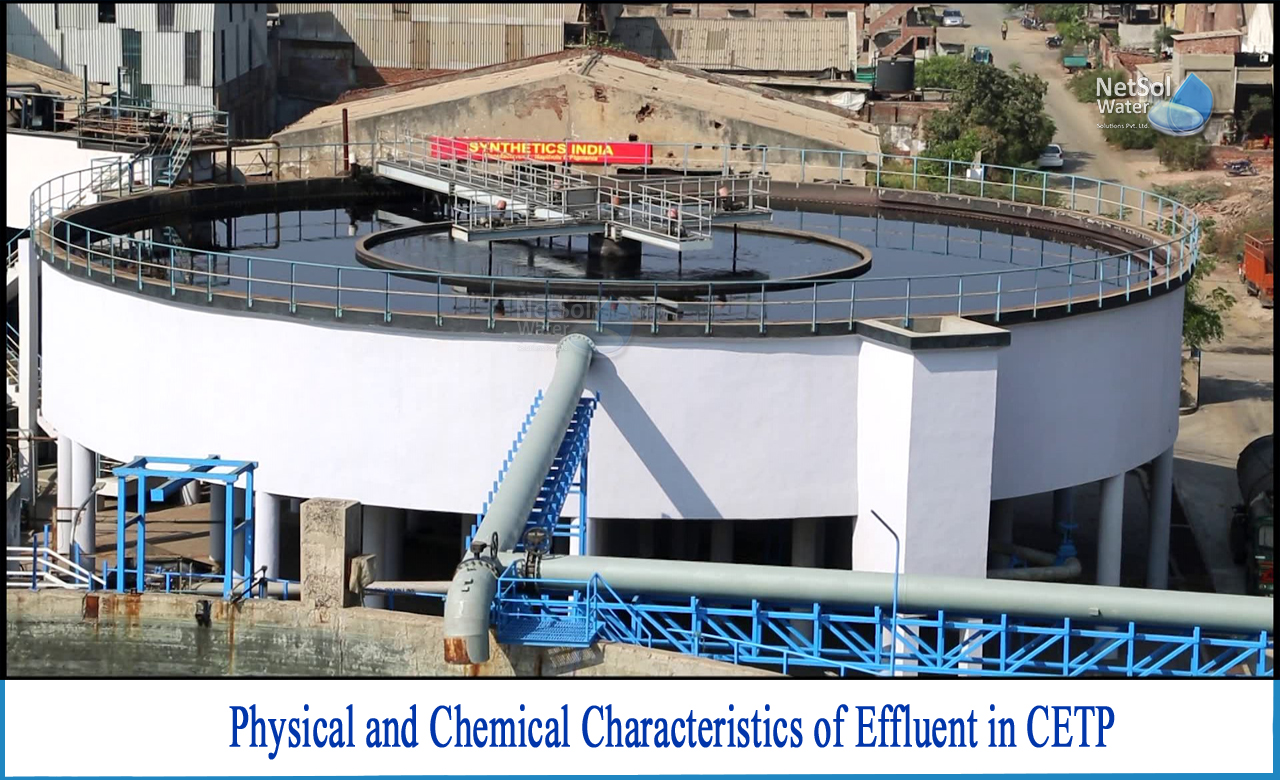What are the Physical and chemical characteristics of effluent?
A vital stage is the analysis of effluent properties to select units in a treatment process scheme. Physical and chemical features of effluent are important in the design of CETP.
i. Physical properties of the effluent
1: Temperature - The temperature of effluents may be used to determine the solubility of oxygen, which influences the oxygen transfer capacity of aeration equipment and the rate of biological activity.
2: Colour and odour - Indicates the colloidal part and the necessity for chemical membrane units in certain treatments.
3: Total and volatile suspended solids - Total solids contain both suspended solids and dissolved solids, which are produced by evaporating the solid and liquid phases.
Types of solids present in effluent
Suspen?ded solids are a mix of settleable and non-settleable particles that are typically evaluated by filtering a wastewater sample through a glass fibre-filter enclosed in a crucible or a membrane filter.
Settl?eable solids are those that settle in sedimentation tanks during a typical detention time. The volume of sludge in the bottom of an Imhoff cone after one hour of settling is used to calculate this percentage.
After evaporation or filtering, the solids are dried, weighed, and burned. The weight loss due to ignition is a measure of volatile solids, which are classified as organic material.
The fixed solids are the residual solids, which are classified as inorganic (mineral) matter.
The suspended solids associated with the volatile fraction are referred to as volatile suspended solids (VSS), whereas those connected with the mineral fraction are referred to as fixed suspended solids (FSS).
ii. Chemical properties of effluent
1: pH - The pH of the effluent is important to the biological treatment units at CETP. Furthermore, acidic effluents produce corrosion issues.
2: Carbonaceous substrates - BOD, COD, or TOC analysis is used to determine carbonaceous ingredients.
-While BOD has traditionally been used to define carbonaceous material in wastewater, COD is increasingly being used in most contemporary comprehensive computer simulation design models.
The BOD test measures the amount of oxygen used by bacteria during the oxidation of organic material in a wastewater sample.The COD test is based on the idea that most organic molecules are converted to CO2 and H2O in acidic circumstances by powerful oxidizing agents.
Note: COD will always be equal to or greater than BOD since the test is performed using a powerful oxidizing agent, which oxidizes everything, including inorganics, to a larger extent.
-A total soluble carbon analysis can be performed immediately on an aqueous sample using the total carbon analyser.
-Some heavy metals and compounds, such as chromium, copper, and others, will influence biological treatment precipitation.
What do we have to offer?
You've come to the correct spot if you want to learn more about typical effluent treatment plants and the related effluent characteristcs!
You can have an expert solution upon contacting Netsol Water Solutions, a leading manufacturer of Industrial and Commercial Water and Wastewater treatment plants, among other services. Our wastewater treatment systems are very effective at removing all types of chemical, physical, and biological pollutants.
Netsol Water is Greater Noida-based leading water & wastewater treatment plant manufacturer. We are industry's most demanding company based on client review and work quality. We are known as best commercial RO plant manufacturers, industrial RO plant manufacturer, sewage treatment plant manufacturer, Water Softener Plant Manufacturers and effluent treatment plant manufacturers. Apart from this 24x7 customer support is our USP. Call on +91-9650608473, or write us at enquiry@netsolwater.com for any support, inquiry or product-purchase related query.



